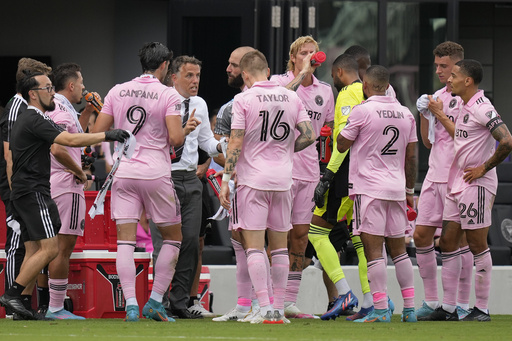
As Major League Soccer (MLS) prepares to kick off its 30th season, there is a growing discussion among players and coaches about the possibility of shifting to a fall-to-spring calendar. This significant change could better align the league with international soccer standards.
Implementing such a transition could improve MLS’s competitive edge in player transfers and allow players the opportunity to focus on club commitments during the summer months when many major international tournaments occur. However, there are notable hurdles to consider, particularly regarding the climate during the season, which would begin in late February and extend through the playoffs into December.
Clubs like Minnesota United and the Chicago Fire already deal with harsh winter conditions. For instance, on a recent Tuesday night, the Colorado Rapids triumphed over LAFC in a CONCACAF Champions Cup match despite temperatures in Denver sinking to single digits. Similarly, a Champions Cup match featuring Lionel Messi’s Inter Miami and Sporting Kansas City was anticipated to take place in frigid weather.
FC Cincinnati’s coach, Pat Noonan, shared his experience from a chilly match in Chicago last season, where temperatures dipped to around 15 degrees Fahrenheit. He emphasized that once the game commenced, the players maintained a high level of intensity, noting that the excitement could sometimes surpass that of summer matchups. Although not universally popular, he expresses support for the idea of a calendar shift.
Furthermore, with the increasing impact of climate change, players face challenges during the hot summer months in locations like Texas, where extreme temperatures have previously forced game rescheduling. As MLS kicks off its new season this Saturday, northern teams not only contend with the cold but also navigate around the dominant NFL and college football schedules.
Seattle Sounders head coach Brian Schmetzer commented on the uniqueness of the U.S. landscape, stating that the diversity of climates should be a critical consideration in the scheduling process. He pointed out the reality that games in some regions may be unfeasible during winter months, complicating any transition to a new structure.
If MLS were to synchronize its schedule with European leagues, the season would likely start in mid-August, pause in mid-December, and resume in February, culminating with the championship in May. Both Noonan and Houston Dynamo general manager Pat Onstad argued that aligning with global leagues would facilitate the recruitment of top talent, allowing clubs to attract the best players without interfering with their current teams’ seasons during the January transfer window.
The existing busy MLS schedule is further complicated by the need to accommodate national team players, who often cycle in and out during the competitive summer months. The Club World Cup is set to take place in the U.S. from June 15 to July 13, with teams like Inter Miami and the Seattle Sounders set to participate. In addition, the MLS will engage in the ongoing CONCACAF Champions Cup and the upcoming Leagues Cup, featuring teams from both MLS and Liga MX, alongside participation in the U.S. Open Cup.
St. Louis goalkeeper Roman Bürki expressed his support for transitioning to the European calendar. He did suggest that if such a shift isn’t feasible, perhaps the Leagues Cup could be moved to the preseason, giving players more rest during the summer.
When MLS commissioner Don Garber was asked about the possibility of adopting an international calendar before the league’s championship match between the LA Galaxy and New York Red Bulls, he indicated that while changes are being considered more seriously than in the past, the organization is not ready to take concrete steps just yet.
This potential transition, previously discussed in 2013, would necessitate extensive planning, but murmurs within the league suggest it might occur after the 2026 World Cup, which will be co-hosted by the United States, Canada, and Mexico—MLS is expected to break for the tournament.
Tim Howard, a former U.S. national team goalkeeper and current investor in the Houston Dynamo and National Women’s Soccer League’s Dash, weighed in on the topic, stating that aligning with international calendars is crucial. Howard acknowledged the challenges presented by such significant changes but emphasized that adapting is a historical constant in professional sports, often requiring difficult transitions that come with growing pains.

